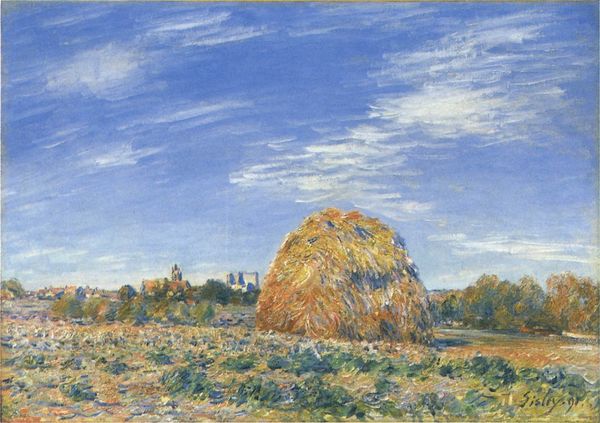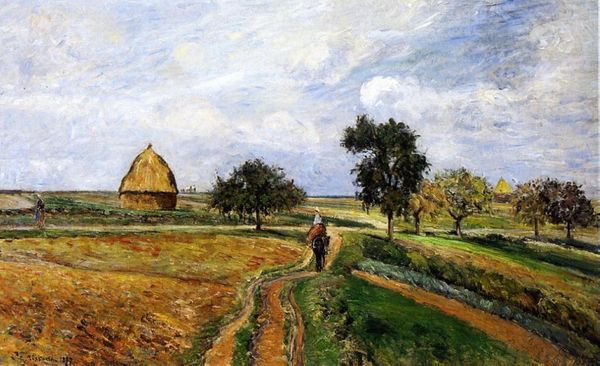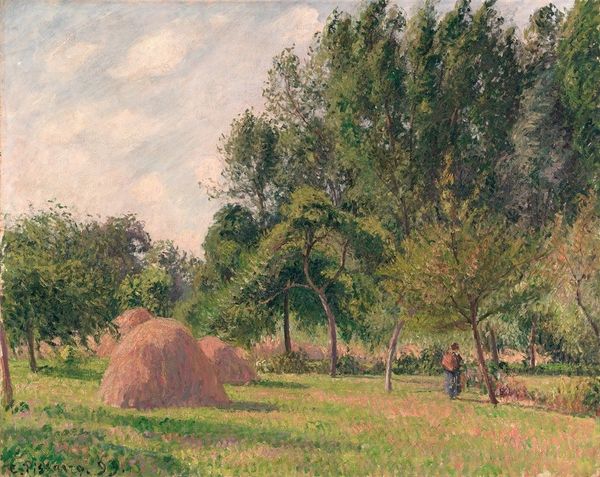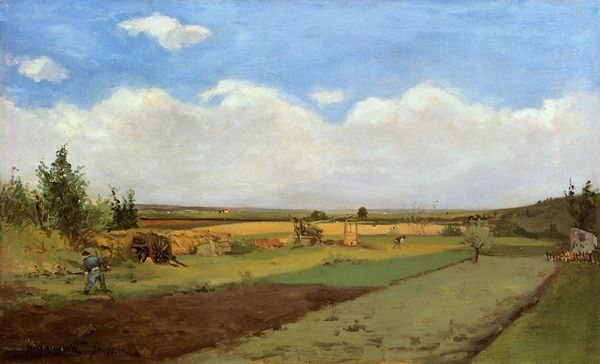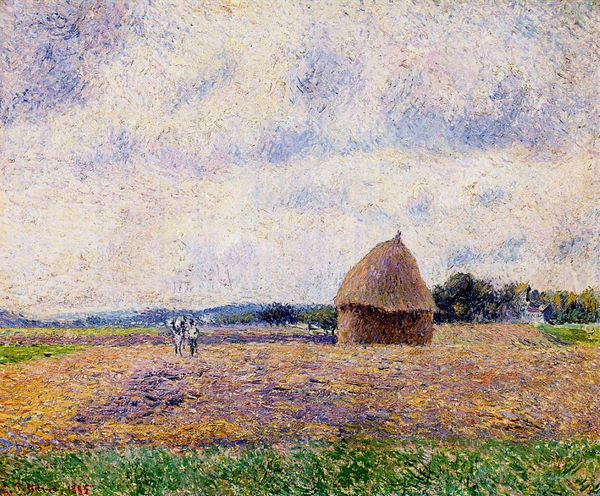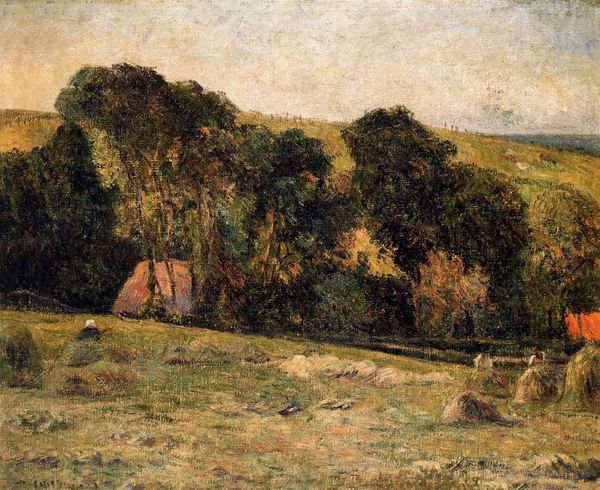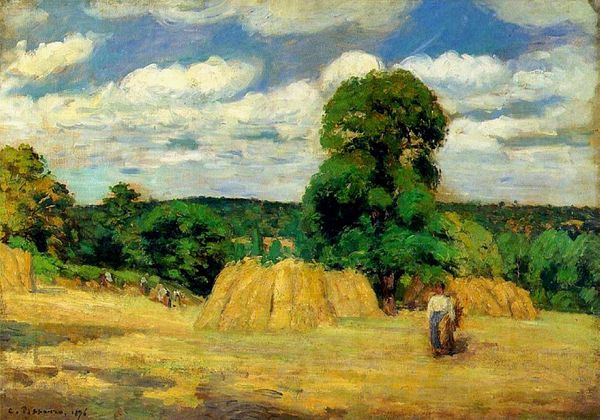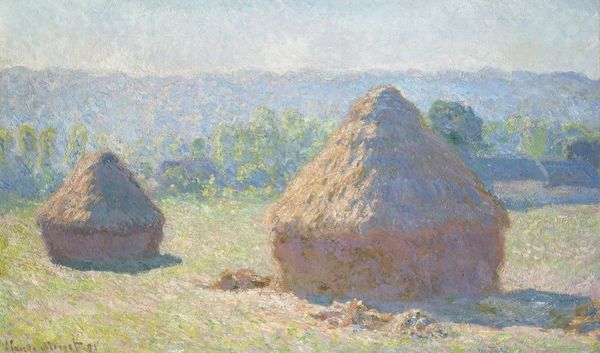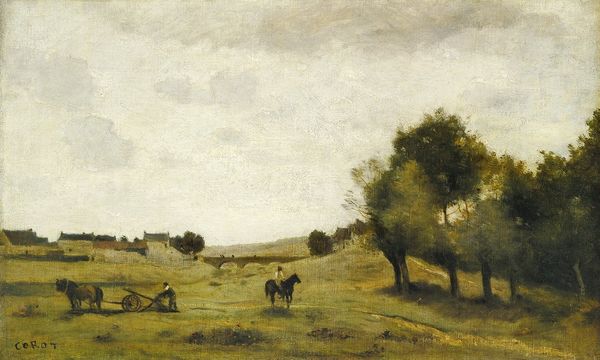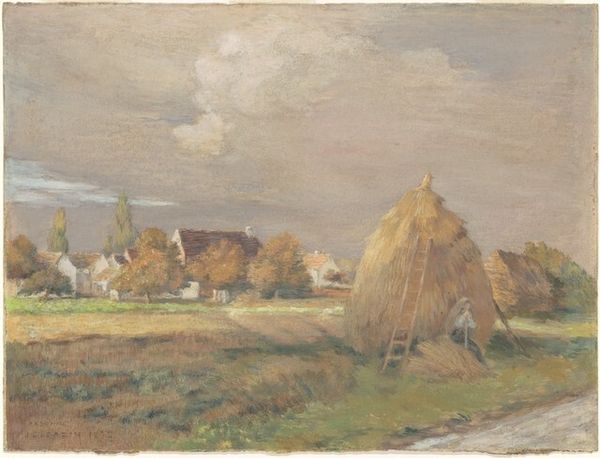
painting, plein-air, oil-paint
#
painting
#
impressionism
#
plein-air
#
oil-paint
#
landscape
#
oil painting
#
academic-art
Copyright: Public domain
Curator: Pissarro's "The Haystack, Pontoise," created in 1873, immediately strikes me with its rather subdued color palette. The subtle blending of earth tones really defines it. Editor: I see it too, but I read something much more active. It's as though the whole landscape breathes. The clouds feel soft and fleeting above, and the haystack—a structure of incredible warmth—anchors everything. The way the light defines the circular form is very calming to me. Curator: You raise an interesting point about the light. Its manipulation guides our reading of depth, leading our eye back across the landscape. The formal construction is not radical. It is a very careful structuring of near and far. Pissarro has created these very distinct zones of visual interest that, when understood, come together into this unified view of the French countryside. Editor: Absolutely. And that perspective he crafts has clear sociopolitical implications when one considers the role of the Impressionists and their desire to display common people interacting in landscapes absent of industry, focusing on agricultural space instead. The peasants pictured add to the piece and, further, reflect Impressionists’ broader aim of recording an almost lost sense of community as the industrialized age shifted social trends. Curator: Do you suppose that is truly distinct from Academic tradition, which often utilized the idealized agrarian fantasy, merely using the compositional and gestural approach in ways so as to suggest…something else? Pissarro’s haystacks still operate with established systems of representation to create an idealized moment of rural tranquility and harmony. Editor: True, however, that interpretation may be challenged through the plein air technique that dominates the movement—an emphasis on lived reality as a way of working. That lends authenticity to an idealized presentation by emphasizing empiricism above didactic moralizing. I'm taken, though, with how something so simple – haystacks in a field, really – can invite such multilayered considerations. Curator: Ultimately, for me, it lies within its ability to convey these ideas through the structure, organization, and careful balancing of tonal relationships—which speaks so loudly about Academic painting as well. I now appreciate the painting's formal ambiguity more so.
Comments
No comments
Be the first to comment and join the conversation on the ultimate creative platform.
